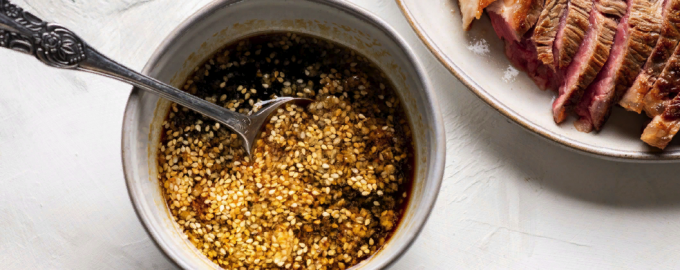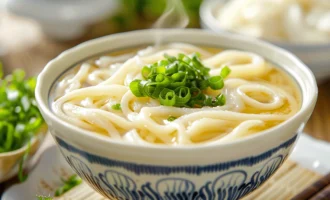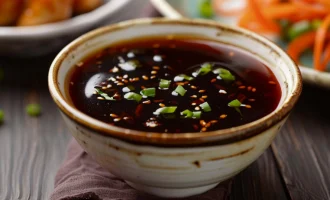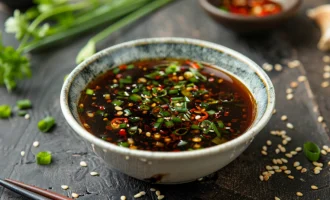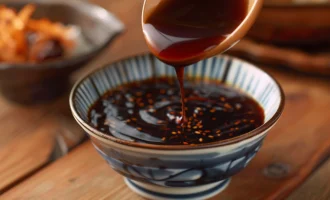Ingredients
- 100g soy sauce
- 80g sugar
- 40g mirin (Japanese sweet rice wine)
- 40g sake (Japanese rice wine)
- 2 cloves garlic, minced
- 1 teaspoon grated ginger
- 1 tablespoon sesame oil
- 1 tablespoon vegetable oil
Per serving
Calories: 80 kcal
Proteins: 1 g
Carbohydrates: 20 g
Method
-
In a saucepan, heat the vegetable oil over medium heat.
-
Add the minced garlic and grated ginger to the pan and sauté for about 1 minute until fragrant.
-
Pour in the soy sauce, mirin, sake, and sesame oil. Stir to combine.
-
Add the sugar to the saucepan and continue stirring until the sugar has completely dissolved.
-
Reduce the heat to low and let the sauce simmer for about 10 minutes, allowing the flavors to meld together and the sauce to thicken slightly.
-
Remove the saucepan from heat and let the yakiniku sauce cool down.
-
Once the sauce has cooled, transfer it to a jar or airtight container for storage.
The yakiniku sauce is traditionally served with grilled meats and vegetables. It is a versatile sauce that adds a savory and slightly sweet flavor to the grilled items. It pairs well with beef, pork, chicken, seafood, and a variety of vegetables.
In conclusion, yakiniku sauce is a delicious brown sauce originating from Japan. It combines the umami flavors of soy sauce with the sweetness of mirin and sake. The addition of garlic, ginger, and sesame oil adds depth and aroma to the sauce. It is a popular condiment for yakiniku-style grilled dishes, enhancing the taste of the meats and vegetables. Its balanced flavors make it a versatile sauce that can be enjoyed in various other dishes as well.
Facts about yakiniku sauce:
- Yakiniku sauce is inspired by Korean barbecue marinades and sauces.
- The word “yakiniku” translates to “grilled meat” in Japanese.
- The sauce is typically used for dipping grilled meats and vegetables.
- Yakiniku sauce is known for its rich umami flavor profile.
- It is a common condiment in Japanese yakiniku restaurants and is often served alongside a variety of meats and vegetables.

